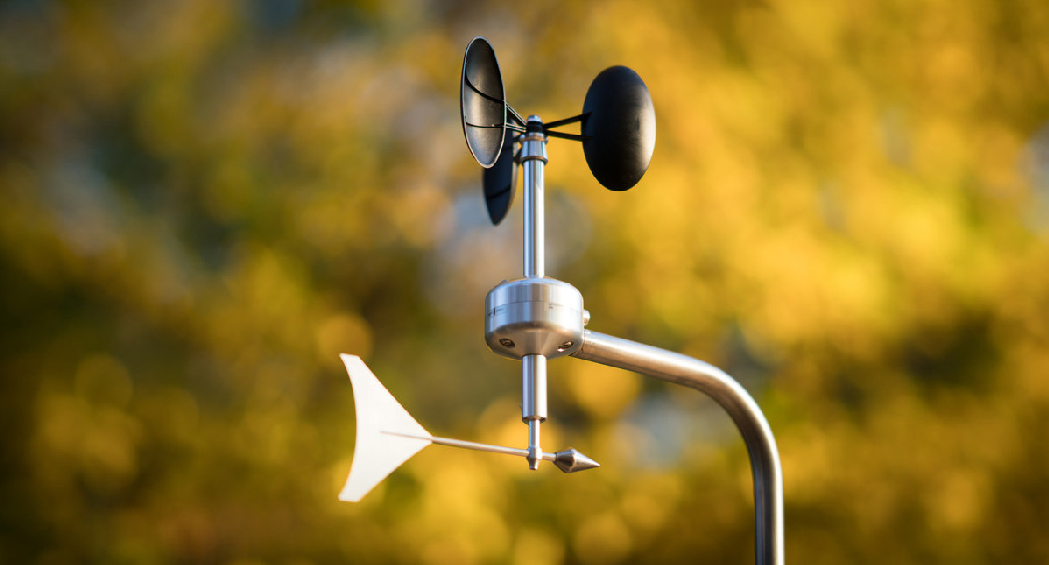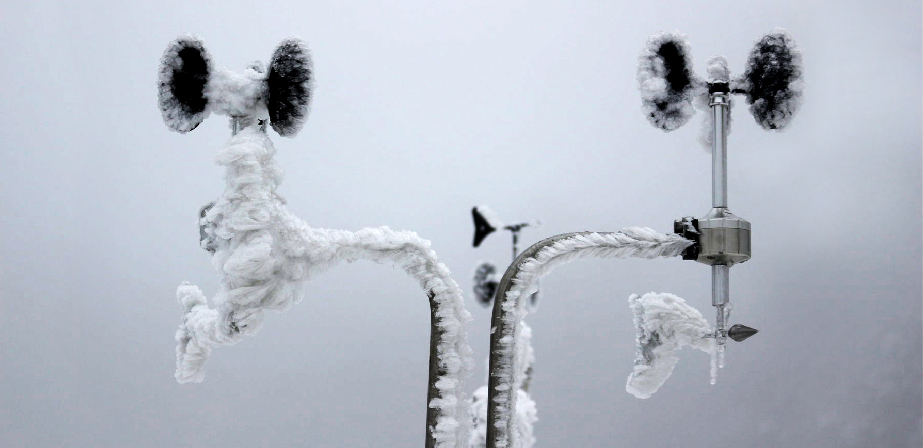- Home
- Products
- Solutions
- Downloads
- About Us
- Insights and news
- Careers
- Contact
Wind Speed & Direction Sensor
MeteoWind | Reliable and Accurate Anemometers with Wind Vanes
MeteoWind anemometers are compact with versatile design, meeting strict requirements of Wind Resource Assessment studies. The Elliptic cups design of our Wind Speed & Direction Sensor creates more torque and linearity for improved data consistency vs. conical cups over a wide range of weather conditions.
Designed with strictest accuracy requirements of Class 1 anemometers for the wind energy market and for durability and ease of use in weather stations. The Elliptical designed cups offer a large wind-blown area offering higher torque and low start speeds.

Unique Features & Benefits
- Combined high accuracy & high response anemometer with wind wane
- Elliptical cup design & wind vane for superb wind dynamics
- Flat elliptic cups are more resistant to snow buildup
- High durability and reliability in all weather conditions
- Exceeds MEASNET accuracy and linearity requirements
- Fast response with a small distance and time constant
- Low startup speed
- Optimised labyrinth bearing holder for superb dirt resistance
- All metal body and oversize ball bearings for long life
Advantages of Elliptical Cups
1. Elliptical cup shape
Patented elliptical design offers a larger windblown area than circular and conical cups for higher aerodynamic torque to overcome bearing friction. Result is more consistent anemometer response throughout the complete air temperature range.


2. Elliptical cup cross-section
Aerodynamic stability in all-weather and throughout the complete wind speed range is a result of the elliptical cup cross section. Elliptical cup cross section is a very stable aerodynamic shape.
3. Strong and durable
Compact and responsive all-metal wind direction vane with superb response rate and good aerodynamic damping prevents overshoots to reduce wind direction data noise. Sitting on oversize ball beatings, the design balances rotational inertia with aerodynamic efficiency resulting in a compact and accurate wind direction vane.


4. Aerodynamically stable body
Strong and durable anodized aluminum body creates a robust platform for mounting. Body shape and circumferential grooves contribute to the anemometer's full-scale linearity and accuracy, while a bayonet connector with IP67 rating down to -40°C provides reliable connections.
Lightning Protection
MeteoWind offers highest 3-stage lightning protection, consisting of :
- High-over voltage protection
- High speed over-current protection
- High speed voltage protection
Lightning protection meets the following international standards for industrial equipment safety :
- EMC Emissions according to EN50081-1 / IEC61000-6-1
- EMI Transients according to EN50081-1 / IEC61000-6-2
- SURGE test 4 kV / 2 kA acc. to EN50082-2 / IEC61000-6-2
- ESD 15000 V (15 kV)

The use of 3-stage lightning protection is complemented by the RS-485 digital output which has inherently high resistance to interference and is therefore most widely used communication interface in tough industrial environments. Together, they can ground out any unwanted electrical interference from wired connections.
Note : Lightning Protection Certification (EMC test results) is uploaded in the Technical Downloads section.
Optional : Heated Anemometer
MeteoWind another variant comes with body and ball bearing heating.
Heater generates a generous 20 W on 24 V or 5 W on 12 V. For wireless weather stations, the heater includes automatic switching with the following user selectable settings:
The photo on the right clearly shows how anemometer heating can benefit data reliability in tough winter climates. While it does not completely eliminate ice buildup on the anemometer cups and wind vane, it significantly reduces the icing effects and prevents the anemometer and vane from completely icing up.

- Wind Speed
- Range : 0-80 m/s
- Resolution : 01 m/s
- Accuracy : < 1% of measured value (0.3-50 m/s) with Measnet Calibration.
- Sampling Rate : 10Hz @3 pulses perrevolution
- Wind Direction
- Range : 0 - 360°
- Resolution : 1°
- Accuracy : 2°
- Sampling Rate : 10Hz
- Starting Wind Speed : <0.3 m/s
- Supply Voltage : 5 - 24VDC
- Power consumption : 4 mA
- Operating temperature : -40°C to +80°C
- Operating humidity Range : 0% to 100% RH
- IP Protection rating : IP65
- MODBUS RTU
- MODBUS ASCII
